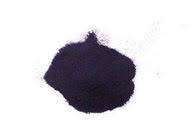synthetic indigo exporters
The Rise of Synthetic Indigo Exporters A Colorful Shift in the Textile Industry
The textile industry has long been synonymous with dyes, with indigo being one of its most cherished hues. Traditionally derived from the Indigofera plant, the indigo dye has been a staple in various cultures, particularly in denim production. However, the emergence of synthetic indigo has transformed the landscape of the textile industry, leading to a new wave of exporters capitalizing on this innovation. This article explores the implications of synthetic indigo production and its impact on exporters and the global market.
Historical Context of Indigo Dye
Indigo dye has an illustrious history, dating back thousands of years. Used in ancient Egypt, India, and China, indigo was once considered a luxury item, often referred to as blue gold. The extraction process from natural sources was labor-intensive and expensive, leading to a restricted supply. As the demand for blue textiles soared, particularly for denim jeans in the 20th century, manufacturers sought more efficient, cost-effective alternatives.
The Advent of Synthetic Indigo
The significant breakthrough in dye chemistry during the 19th century led to the synthesis of indigo dye. The first synthetic indigo was produced in the 1890s, paving the way for mass production. Today, synthetic indigo accounts for over 90% of the indigo used in the textile industry. The synthetic variant offers numerous advantages, including a consistent quality, lower production costs, and a more sustainable approach as it reduces the dependence on plant cultivation.
Impact on Exporters
The rise of synthetic indigo has opened up new markets for exporters, particularly in countries that have invested in chemical manufacturing capabilities. China, India, and several countries in Southeast Asia have emerged as leading producers of synthetic indigo. These nations have established robust supply chains that allow for efficient production and distribution, making them attractive sources for textile manufacturers worldwide.
Economic Benefits
synthetic indigo exporters

Exporters of synthetic indigo benefit from high demand in the textile sector. As brands increasingly seek to reduce costs without sacrificing quality, synthetic indigo provides an ideal solution. The growing global fashion industry, particularly the booming denim market, has further propelled demand. Synthetic indigo exporters have reported significant growth in their revenues, with many scaling operations to meet international demand.
Sustainability Considerations
In recent years, sustainability has become a crucial focus for the textile industry. While synthetic indigo presents environmental concerns, such as chemical waste, many exporters are adopting greener practices. For example, some companies are investing in eco-friendly production methods and waste management systems. Additionally, the reduction of land use for natural indigo cultivation supports environmental sustainability by preserving ecosystems.
Market Dynamics and Challenges
Despite the advantages of synthetic indigo, exporters face several challenges. The market is highly competitive, with numerous players vying for dominance. Price volatility of raw materials used in synthetic dye production can affect profitability. Moreover, as consumers become more environmentally conscious, concerns about the environmental impact of synthetic dyes may influence purchasing decisions.
Some brands are choosing to promote their use of natural indigo, emphasizing sustainability and eco-friendliness. This consumer trend necessitates that synthetic indigo exporters innovate and highlight their sustainability initiatives to remain relevant.
Future Outlook
The future of synthetic indigo exporters appears promising as the textile industry continues to evolve. With advancements in dye technology and a growing emphasis on sustainability, there are opportunities for innovation in synthetic dye production. As textile manufacturers increasingly seek reliable, high-quality dyes, synthetic indigo will likely maintain its position as a leading choice.
In conclusion, the emergence of synthetic indigo has reshaped the textile industry, providing remarkable opportunities for exporters worldwide. By embracing sustainable practices and adapting to market dynamics, synthetic indigo exporters can thrive in an ever-changing landscape. The journey from historical natural dyes to modern synthetic alternatives illustrates the resilience and adaptability of the textile industry, showcasing a vibrant future for this essential sector.
-
The Timeless Art of Denim Indigo Dye
NewsJul.01,2025
-
The Rise of Sulfur Dyed Denim
NewsJul.01,2025
-
The Rich Revival of the Best Indigo Dye
NewsJul.01,2025
-
The Enduring Strength of Sulphur Black
NewsJul.01,2025
-
The Ancient Art of Chinese Indigo Dye
NewsJul.01,2025
-
Industry Power of Indigo
NewsJul.01,2025
-
Black Sulfur is Leading the Next Wave
NewsJul.01,2025

Sulphur Black
1.Name: sulphur black; Sulfur Black; Sulphur Black 1;
2.Structure formula:
3.Molecule formula: C6H4N2O5
4.CAS No.: 1326-82-5
5.HS code: 32041911
6.Product specification:Appearance:black phosphorus flakes; black liquid

Bromo Indigo; Vat Bromo-Indigo; C.I.Vat Blue 5
1.Name: Bromo indigo; Vat bromo-indigo; C.I.Vat blue 5;
2.Structure formula:
3.Molecule formula: C16H6Br4N2O2
4.CAS No.: 2475-31-2
5.HS code: 3204151000 6.Major usage and instruction: Be mainly used to dye cotton fabrics.

Indigo Blue Vat Blue
1.Name: indigo blue,vat blue 1,
2.Structure formula:
3.Molecule formula: C16H10N2O2
4.. CAS No.: 482-89-3
5.Molecule weight: 262.62
6.HS code: 3204151000
7.Major usage and instruction: Be mainly used to dye cotton fabrics.

